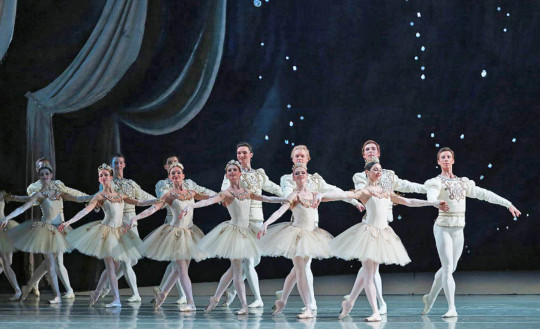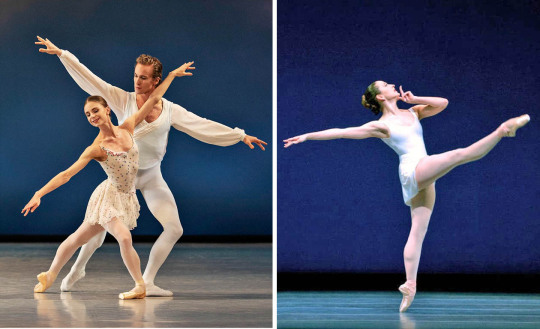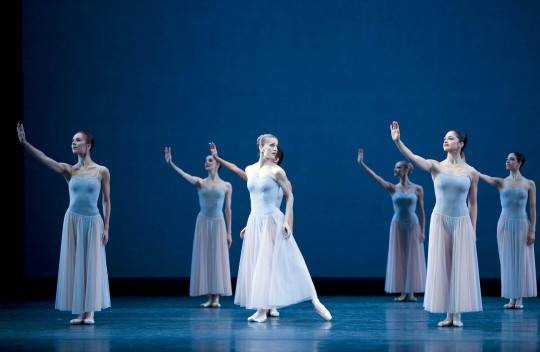#francisco lopez
Explore tagged Tumblr posts
Text
Francisco Lopez talk at Musrara Mix Festival 23, Jerusalem. Part 2
www.franciscolopez.net/ t-hs.bandcamp.com/
2 notes
·
View notes
Text

Jonny Quest: The Real Adventures #1
#Jonny quest: the real adventures#the real adventures of jonny quest#jonny quest#hadji#cave#skeleton#adventure#Francisco solano lopez#dark horse comics#comics#90s comics
22 notes
·
View notes
Text
#El Eternauta#Ricardo Darin#Hector Oesterheld#Hector G Oesterheld#Francisco Solano Lopez#Netflix#hecho en argentina#argentina#argieposting#tv argentina
4 notes
·
View notes
Text

The Painter Francisco de Goya
Artist: Vicente López Portaña (Spanish, 1772–1850)
Date: 1826
Medium: Oil on canvas
Collection: Museo Nacional del Prado, Madrid, Spain
Description
In 1826, the Aragonese made a quick trip to Madrid from his exile in Bordeaux to arrange his pension as a court painter; the Valencian master took advantage of the occasion to paint this effigy of him - undoubtedly the most emblematic of the genius from Fuendetodos -, destined for the Royal Museum, as a tribute and recognition to his figure, which would thus be consecrated forever within the walls of the Prado Museum . Goya poses before López seated in an armchair, with his legs crossed, dressed in a frock coat and greenish-grey trousers, a striped waistcoat and a ruffled tie. He is portrayed half-length, holding the palette in his left hand and the brush in his right, in front of a canvas on an easel, on which the dedication can be read. This portrait, in which Goya is eighty years old, is undoubtedly the most widely disseminated effigy of the brilliant Aragonese, even above his own self-portraits. For this reason, it is also the work that has given Vicente López the greatest fame , although more for the identity of the subject than for the indisputable excellence of its pictorial quality.
#portrait#francisco de goya#oil on canvas#seated#armchair#frock coat#trousers#waistcoat#ruffledtie#half length#vicente lopez portana#spanish art#spanish painter#european art#painter palette and brush#spanish culture#chair#dark grey suit#white shirt with ruffles#10th century painting#museo nacional del prado
6 notes
·
View notes
Text
So she called out Poder Prieto for not having paid her, and this wasn't even their job?
@cutelatinagirl you think this is the missing MZ angle? All of these women joined forces and devised a plot to take down Tenoch?

More proofs that Elena lies!!
Here is the conversation where "el feisbuk de la Malinche" ask Elena for her account to pay her for the podcast
@oakzap425 @cantstayawaycani @love-too-believe @too-many-atoms @talokanda-forever @cutelatinagirl @observers-journal @soledadmiranda @luzsp9-1981
#tenoch huerta#tenoch huerta mejía#jose tenoch huerta mejia#elena rios#maria elena rios#poder prieto#francisco lopez
67 notes
·
View notes
Text

The Incredible Adventures of Janus Stark - cover by Francisco Solano Lopez.
#comic books#british comics#tom tully#francisco solano lopez#janus stark#softcover#treasury of british comics#smash comic
2 notes
·
View notes
Text

Above: the Maryinsky Ballet in the Diamonds section of Jewels. Photo: Kassir St. Petersburg
The New York Times has several new articles on the New York City Ballet to mark its 75th Anniversary Season, which opens Sept. 19. I'll be posting them all.
CITY BALLET AT 75
The Long Life and Long Reach of George Balanchine’s Butterflies
Balanchine didn’t think his ballets would last. But many have become classics, the cornerstone of repertory not just at City Ballet but around the world.
By Brian Seibert
While celebrating its 75th anniversary this fall, New York City Ballet is performing 18 ballets by its founding choreographer, George Balanchine. But to get a sense of the global standing of Balanchine, 40 years after his death, other numbers might be more telling. Last year, for instance, around 50 other ballet companies across the world performed his works, about 75 dances in total.
Balanchine likened his ballets to butterflies: “They live for a season.” But they have lasted much longer than that. They have become classics, cornerstones of the international repertory, 20th-century equivalents of 19th-century staples like “Swan Lake,” danced everywhere by all the major ballet companies and most of the minor ones, too.
These ballets, like Balanchine, emerged from the same Russian Imperial tradition as “Swan Lake,” but were shaped—as he was—by America, and by modernism and other 20th-century searches for the new. Always intimately connected to music, they sometimes told stories and sometimes, like music, were more abstract arrangements of forms and energies. They stretched ballet—in technique, in how daring and dynamic it could be, in how little outside of itself it needed — and were unparalleled in range and influence, so much so that the state of ballet is often framed as a question: Where is the next Balanchine?
City Ballet still performs by far the most Balanchine—the most ballets, the most often—but performances by other companies probably reach as many or more people, certainly in more places. All these performances, though, are connected to New York City Ballet, because the dissemination of his works remains a matter of lineage—of connections to Balanchine.

Above: Ballet Imperial (Tchaikovsky Piano Concerto #2) performed by the Paris Opera Ballet, with Valentine Colasante and Pablo Legasa. Photo: Agathe Poupeney
Before City Ballet became a durable laboratory and library for Balanchine’s choreography, he often worked as a choreographer for hire. That’s why American Ballet Theater dances “Theme and Variations,” which he made for that troupe in 1947. But few of the companies he created works for have survived, and most of the works that survived are those that became part of the City Ballet repertory. The company was the hub from which his influence radiated.
In the early years of the company, Balanchine sometimes staged works for European troupes with which he was connected: Paris Opera Ballet, the Royal Danish Ballet, what became the Royal Ballet. The reception to his innovations, especially the more radical ones, was highly variable, both abroad and in the more ballet-bereft country he had made his home. There, Balanchine was both generous and prudent with his ballets.
“He was giving them away for free, but he was in control,” said Jennifer Homans, the author of “Mr. B: George Balanchine’s 20th Century.” “Looking at the correspondence, you can see he was careful about who could do it and who couldn’t, and about which ballets could be done by others and which couldn’t.” He staged them himself, or he sent people he trusted. Francia Russell danced with City Ballet from 1956 to 1961. Since 1964, when she became a ballet master at the company, she has staged more than 200 productions of Balanchine ballets for other troupes. “They weren’t many people doing it at the beginning,” she said. “At first, I staged only ballets that I had actually danced.” Later, it became possible to consult films, but Russell didn’t use them much. “I always said I’m staging them the way I danced them when with Mr. B was with us.”

Left: Ida Praetorius and Jón Axel Fransson of the Royal Danish Ballet in Ballo della Regina. Photo: Henrik Stenberg Right: Pacific Northwest Balllet's Carrie Imler in Apollo. Photo: Angela Sterling
It was during the 1960s that City Ballet became a dominant institution, with a custom-built theater in the new Lincoln Center. An exceptionally large grant from the Ford Foundation put City Ballet and its affiliated School of American Ballet at the helm of a program to support ballet and ballet education. Following Balanchine’s recommendations, the foundation granted seed funding to regional troupes like Boston Ballet and Pennsylvania (now Philadelphia) Ballet. Balanchine granted these fledgling companies something nearly as important: some of his works, free of charge.
That process continued as members of City Ballet founded their own companies or became artistic directors. Arthur Mitchell, the company’s first Black principal dancer, erected the repertory of Dance Theater of Harlem, founded in 1969, on a foundation of Balanchine pieces. Some City Ballet dancers found leadership roles in Europe, like Patricia Neary in Switzerland. In 1977, Russell and her husband, Kent Stowell, moved from Frankfurt Ballet to Pacific Northwest Ballet in Seattle and built it into another outpost of Balanchine repertory.
“Mr. B said he trusted me to only ask for the ballets I thought our dancers could do,” Russell said. “And whatever we wanted, it was ‘Of course, dear.’ He never asked for a penny.” These ballets, she added, “were an education in classical dance for our dancers,” a sentiment commonly voiced by artistic directors. After Balanchine’s death, in 1983, the City Ballet diaspora spread further. In 1985, Edward Villella, a City Ballet star of the 1960s and ’70s, transformed Miami City Ballet into a Balanchinian troupe. That same year, Helgi Tomasson, after dancing with City Ballet for 15 years, became artistic director of San Francisco Ballet, a post he held until 2022. None of these and other companies led by City Ballet alumni danced Balanchine exclusively, but there was a family connection. Successors were often in the family, too. Russell and Stowell were followed (in 2005) by Peter Boal, Villella (in 2012) by Lourdes Lopez, both former principals at City Ballet and alumni of its school.

Above: the San Francisco Ballet in Divertimento #15. Photo: Dave Morgan
By this point, acquiring a Balanchine work was no longer “Of course, dear.” Skeptical that his works could last without him, and never much interested in posterity, he left his ballets in his will not to City Ballet but to 14 dancers and colleagues. The George Balanchine Trust was formed in 1987 to bring some order and stability to the licensing and restaging. The stagers it authorized were all dancers who had been with Balanchine in the classroom and rehearsal studio.
Now Balanchine works circulated to places where they had not before been part of the repertory. Russell was the first to stage one in China, in 1987. The next year, she brought one to the Soviet Union — to the institution then known as the Kirov Ballet (now the Mariinsky), where Balanchine had trained in the first decades of the 20th century but where few of the dancers had seen his works or knew much about him.
Always, there have been questions about authenticity. Balanchine frequently changed his choreography—for different dancers and stages—so which was the right version and in whose memory of it? And beyond the steps, was the spirit transferable, the elusive and usually unspoken ideas, the all-important musicality? Disagreements about these questions—applied to companies of dancers not trained in Balanchine’s aesthetic and modifications to technique, but also to City Ballet—were perpetual and often heated. For many viewers, Balanchine after Balanchine wasn’t Balanchine at all, and couldn’t be. Balanchine had suggested as much himself. And now a new phase is coming. As Russell put it, speaking of her generation, “We’re all too old to preserve that tradition in the same way.”

Above: Left: Sandra Jennings of the Balanchine Trust rehearsing Gabriella McCann of the City Ballet of San Diego. Photo: K.C. Alfred Right: Symphony in C, second movement, with Olga Smirnova and Dennis Rodkin of the Bolshoi Ballet. Photo: Damir Yusupov
Lopez, who is 20 years younger, made a similar point. “There aren’t many of us,” she said, “who worked with him and still talk about him as if he were next door.” But she also spoke about dancers, at Miami City Ballet and elsewhere, hungry to learn Balanchine’s aesthetic, dancers born after he died who talk about him as if they knew him.
It is those kinds of people who make Suki Schorer feel positive about Balanchine’s legacy. A City Ballet member from 1959 to 1972, she wrote a book on Balanchine technique and has been teaching at the School of American Ballet for some 60 years. Asked about Balanchine’s influence today, she listed young teachers, trained at the school, who have fanned out across the country.
Silas Farley is one. Born 11 years after Balanchine died, he encountered the Balanchine lineage at the school of North Carolina Dance Theater, which was run by the former City Ballet stars Patricia McBride and Jean-Pierre Bonnefoux. Farley became obsessed with Balanchine lore, which he absorbed deeply at the School of American Ballet and as a City Ballet member from 2013 to 2020.
“I have always had an acute sense that I’m one of the people who has been entrusted with a lot of these ideas and that, God willing, I’ll be here a long time after the people who entrusted those ideas to me,” he said on a call from Southern Methodist University, where he teaches.
His students, he said, are “empowered by all of Balanchine’s cool amendments and extensions of classical technique. They delight in the granular and the grand, the nuances and the capacity to dance more expansively, more freely.” Balanchine’s works, he added, “are such a big part of their understanding of what ballet is.”
Their understanding and everyone else’s. Those works, however altered by time, remain ubiquitous. Nikolaj Hübbe, a Danish dancer who performed with City Ballet from 1992 to 2008 and has led the Royal Danish Ballet ever since, is one of those who believe in their enduring power. “I don’t think I’ve ever worked with a dancer, even if Balanchine was foreign to them, who did not have an epiphany, a wow feeling, dancing his ballets,” Hübbe said. “Our dancers love them, revel in them. There’s a logic that speaks to all classically trained dancers. The choreography sings well. I don’t think that will ever go away.”

Above: Marianela Núñez and the Royal Ballet in Serenade, 2008. Photo: Johan Persson
#Balanchine#ballet#Balanchine ballet#Balanchine's legacy#rehearsing Balanchine#Maryinsky Ballet#Paris Opera Ballet#Royal Danish Ballet#Pacific Northwest Ballet#San Francisco Ballet#City Ballet of San Diego#NYCB@75#Bolshoi Ballet#Royal Ballet#Brian Siebert#Francia Russell#Lourdes Lopez#Silas Farley#Nikolaj Hubbe
25 notes
·
View notes
Text
2000AD and Valiant art features in massive Heritage Auctions International Comic Art event
A massive Heritage Auctions International Comic Art event takes place this weekend, 9th - 10th March 2024, offering iconic works from Tintin, Metabarons, Rom, plus art by Brian Bolland, Carlos Ezquerra, Moebius, Jack Kirby and more

View On WordPress
#Alex Ross#Brian Bolland#Carlos Ezquerra#Dave Gibbons#Don Lawrence#downthetubes News#Fantastic Four#Francisco Solano Lopez#Heritage Auctions#Jack Kirby#Jean Frisano#Jesus Blasco#Karl the Viking#Kelly&039;s Eye#Lion#Metabarons#Mick Austinb#Moebius#Rafael López Espí#Rom the Spaceknight#Ron Smith#SF Comics#The Rise and Fall of the Trigan Emoire#TinTin#Tony Hough#Valiant
2 notes
·
View notes
Text
LA INMACULADA MADRE DE LOS INFANTES. General de División (R.) Rafael Dávila Álvarez
8 de Diciembre, día de la Inmaculada Concepción, Patrona de España y de su Infantería. Fue España la Nación que por sus reyes y teólogos trabajó más que nadie para que amaneciera el día de la proclamación del dogma de la Concepción Inmaculada de María. Quizás fue por ello que quiso la Inmaculada formar parte de la Infantería española mostrándose como su protectora un 8 de diciembre de 1585, en la…

View On WordPress
#8 de Diciembre#blog generaldavila.com#coronel luis lopez anglada#día de la Inmaculada Concepción#dogma de la Concepción Inmaculada de María#España y a su Patrona la Inmaculada#la infanteria española#la Purísima e Inmaculada Concepción#Patrona de España y de su Infantería#Patrona y Protectora#rafael davila alvarez#sin novedad#tercio de francisco de bobadilla
0 notes
Text
Francisco Lopez talk at Musrara Mix Festival 23, Jerusalem. Part 1
www.franciscolopez.net/ t-hs.bandcamp.com/
0 notes
Text






Dark Horse Presents
Aliens: Kidnapped (1997)
Aliens: Kidnapped #1-3 by Jim Woodring, Justin Green & Francisco Solano López
#comic book art#dark horse comics#20th century fox#comic books#aliens#aliens podcast#dark horse presents#xenomorph#aliens (1986)#Francisco Solano López#Francisco Solano Lopez
1 note
·
View note
Video
youtube
🥰 El Eternauta by Oesterheld & López 🙌 Published by @fantagraphics 😎 #a...
0 notes
Text











Nazarin (1959)
0 notes
Text
"City of Dreams" Trailer, Poster and Images
Mohit Ramchandani directed the City of Dreams, inspired by actual events. Traffickers transport Jesús, played by Ari Lopez, a young Mexican boy with dreams of becoming a soccer star, across the border and sell him to a sweatshop in downtown Los Angeles. There, it’s a sweatshop forcing him to make a fast fashion, shattering his dreams. Thrust into a world of exploitation and despair, he’s forced…
1 note
·
View note
Text
https://fb.watch/raJc0BemGf/
0 notes
